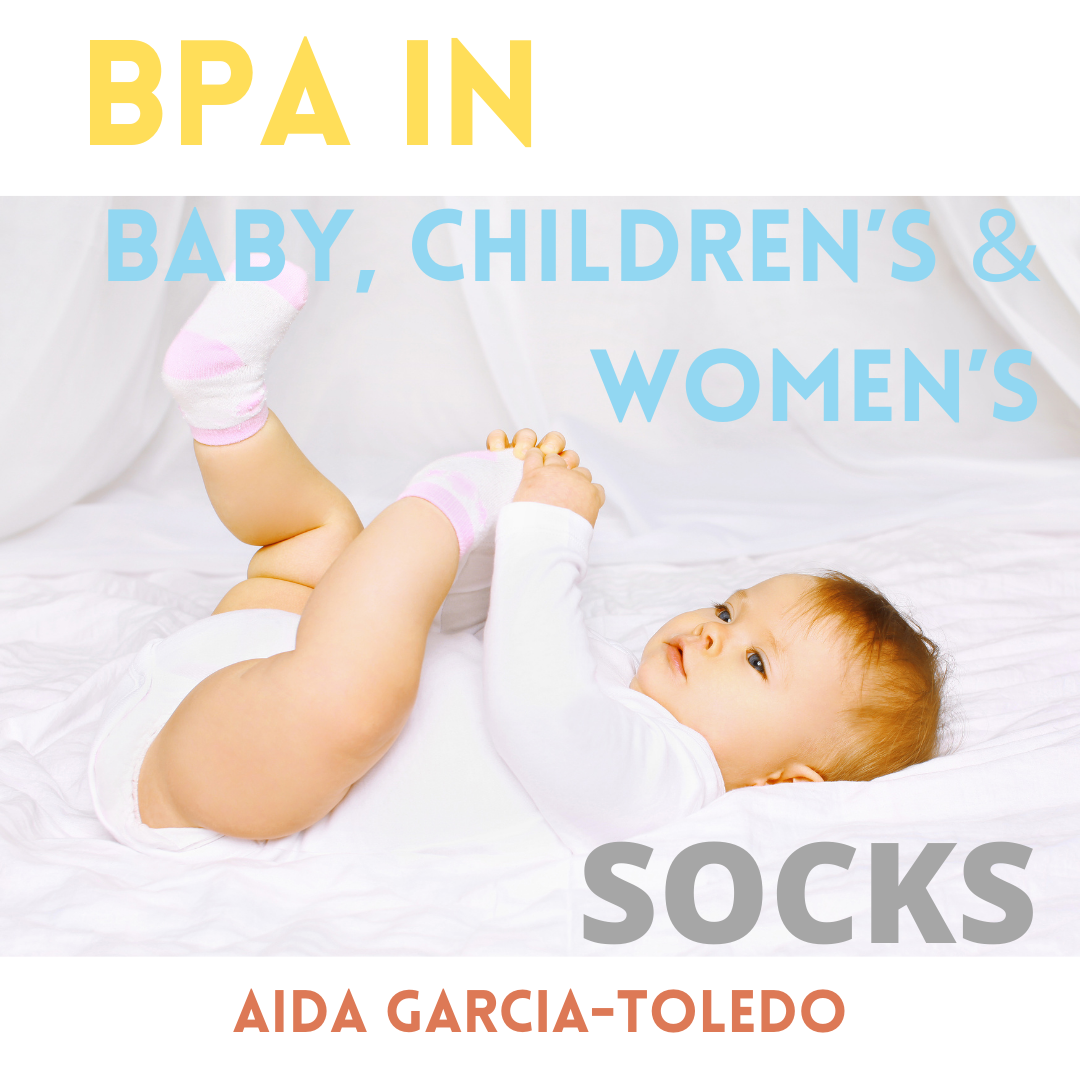New Study: BPA in baby, kids and adult socks
Two years ago I posted about 2 studies (1 from China one from Spain) that had found BPA in baby socks. Since then I have been recommending to choose organic or at least 100% cotton socks, especially for babies and kids.
This month, the Center for Environmental Health sent legal notices to 42 companies after new testing showed BPA in baby, children’s, and women’s socks at up to 19 times over the state of California’s safe limit.
Let’s discuss
Why is BPA bad?
Most of us know to avoid BPA in plastic ( and many might also know that items labelled as “BPA Free” usually contain BPA substitute chemicals that are harmful too)
The reason is that BPA, also known as bisphenol A, is an endocrine disrupting chemical that mimics the hormone estrogen.
Prenatal & postnatal exposure to BPA has been associated with adverse health effects in children, including:
Obesity
Asthma
Behavioral problems
Early puberty
It can be found in plastics (bottles, toys, food containers), canned food linings and thermal store receipts.
But it can also be found in…. polyester
Past studies
In 2017 researchers in China looked at textiles purchased internationally (including the US) and found that many contained BPA. Socks contained the highest concentrations of BPA particularly those made with 97% polyester fabric marketed for infants.
In 2018 another study looked at pantyhose from 6 countries and found 23 endocrine-disrupting chemicals, including bisphenols, benzophenones, chlorophenols, parabens, and triclocarban (TCC), in 74 pantyhose samples collected from 6 countries. Pantyhose made with 21–50% Spandex contained the highest concentrations of BPS. Bisphenol S (BPS) and bisphenol A (BPA) were found in 100% and 96% of the samples
In 2019, a conducted in Spain, looked specifically at infant and children’s socks and found that 90.6% of socks sold for babies and children they looked at contain BPA. (also found Ethyl-paraben in 100% of socks)
New Study
found BPA in the socks made for babies, children & adults sold in the US made predominantly from polyester with spandex from these brands
After the results, CEH has sent legal notices to these 42 companies whose socks contained BPA: Aeropostale, Apara, ASics, Bare Hugs, Betsey Johnson, Bon Domir, Champion, Charlotte, Danbar Global Stars & Dreamers, Dr. Scholls, Elite Collection, Ellen Tracy, ENVY, Forevery 21, Gaiam, Fruit of the Loom, Hanes, Hurley, Jessica Simpson, Juicy Couture, K Swiss, Legale, Lucky Brand, MeMoi, New Balance, Nickelodeon, No Boundaries, Pickle & Dot, Polo Ralph Lauren, Puma, Reebok, Rising Star, Sketchers, So Dorable, Sole Saying, Spalding, Steve Madden, Tic Tac Toe, Tommy Hilfiger, Wonder Nation, Xhilaration
sign their petition to Tell Fashion CEOs: Take the BPA Out of Socks
Can’t the BPA just be washed off?
No. The BPA rates were not reduced after laundering clothes. In fact, clothing containing BPA seems to contaminate other clothes in the wash – resulting in higher average BPA levels in used clothes than in new clothes.
SHOULD WE BE ALARMED AT THESE FINDINGS?
Yes. While the estimated skin exposure to BPA through socks is relatively low, BPA is known to cause harmful effects at low dose levels, especially in infants and young children.
The chemicals taken from these baby socks behave like the female hormone estrogen and they can also inhibit the production of testosterone. When our bodies experience a long period of time with a hormone imbalance (higher levels of estrogen and/or lower levels of testosterone) such as the ones that BPA exposure may cause, there can be increased risk of hormone-related cancers, attention deficit disorders and hyperactivity, genitourinary disorders, premature sexual development, lower male sperm quality and obesity in children.
Considering babies are especially vulnerable to chemicals and that they often place their feet in their mouths, it’s important that parents take measures to avoid BPA exposure as much as possible.
Being exposed to small amounts of BPA through different sources (other clothing, food, household items etc) adds up, especially in infants and young children.
Additionally, while large studies lack, I suspect that BPA is also found in other clothing items (probably clothing made with polyester and/or spandex) whcih would add a much larger potential source of bisphenols to our daily exposure rate.
🌟How to avoid BPA in your baby’s socks?
👉🏻 Buy GOTS certified organic or OEKO-TEX certified products These two Certifications test for and do not allow BPA in clothing items.
👉🏻 Buy socks/ clothing items made of 100% natural materials like wool, alpaca, cashmere, 100% organic cotton & hemp. Avoid synthetic fibers especially polyester and spandex which require additives to be produced, with one of the most common additives being BPA.
AIDA APPROVED BABY & KIDS SOCKS
Q FOR QUINN (GOTS ORGANIC COTTON)
PACT ORGANICS (GOTS ORGANIC COTTON)
Hanna Andersson (OEKO TEX CERTIFIED)
LAMINGTON SOCKS (MERINO WOOL)
MAGGIES SOCKS (MADE WITH ORGANIC COTTON AND ORGANIC WOOL )
FRUGI (GOTS ORGANIC COTTON)
SOURCES
https://www.sciencedirect.com/science/article/pii/S0160412019307287
https://ceh.org/bpa-socks/
https://pubs.acs.org/doi/10.1021/acs.est.7b00701
https://pubs.acs.org/doi/10.1021/acs.est.8b03129
https://pubmed.ncbi.nlm.nih.gov/31124657/

